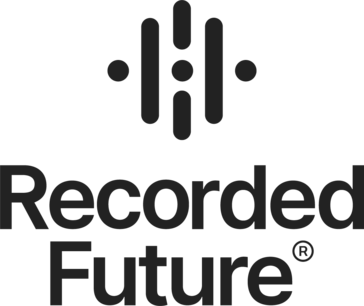Recorded Future and X (Formerly Twitter) integration
Save yourself the work of writing custom integrations for Recorded Future and X (Formerly Twitter) and use n8n instead. Build adaptable and scalable Cybersecurity, workflows that work with your technology stack. All within a building experience you will love.

How to connect Recorded Future and X (Formerly Twitter)
Create a new workflow and add the first step
In n8n, click the "Add workflow" button in the Workflows tab to create a new workflow. Add the starting point – a trigger on when your workflow should run: an app event, a schedule, a webhook call, another workflow, an AI chat, or a manual trigger. Sometimes, the HTTP Request node might already serve as your starting point.
Build your own Recorded Future and X (Formerly Twitter) integration
Create custom Recorded Future and X (Formerly Twitter) workflows by choosing triggers and actions. Nodes come with global operations and settings, as well as app-specific parameters that can be configured. You can also use the HTTP Request node to query data from any app or service with a REST API.
Supported API Endpoints for Recorded Future
GetEntity
Retrieve details of a specific entity.
SearchEntities
Search for entities based on criteria.
ListEntityTypes
List all entity types available.
GetEntityAssociations
Retrieve associations for a specific entity.
GetEntityRiskScore
Retrieve risk score for a specific entity.
GetAlerts
Retrieve a list of alerts.
GetAlertDetails
Retrieve details of a specific alert.
CreateAlert
Create a new alert.
UpdateAlert
Update an existing alert.
DeleteAlert
Delete a specific alert.
GetIntelligence
Retrieve intelligence for a specific query.
SearchIntelligence
Search for intelligence data.
GetIntelligenceTrending
Retrieve trending intelligence data.
GetIntelligenceByCategory
Retrieve intelligence data by category.
GetIntelligenceSummary
Retrieve summary of intelligence data.
GetRiskLists
Retrieve a list of risk lists.
GetRiskListDetails
Retrieve details of a specific risk list.
CreateRiskList
Create a new risk list.
UpdateRiskList
Update an existing risk list.
DeleteRiskList
Delete a specific risk list.
To set up Recorded Future integration, add the HTTP Request node to your workflow canvas and authenticate it using a predefined credential type. This allows you to perform custom operations, without additional authentication setup. The HTTP Request node makes custom API calls to Recorded Future to query the data you need using the URLs you provide.
Take a look at the Recorded Future official documentation to get a full list of all API endpoints
X (Formerly Twitter) supported actions
Create
Send a direct message to a user
Add Member
Add a member to a list
Create
Create, quote, or reply to a tweet
Delete
Delete a tweet
Like
Like a tweet
Retweet
Retweet a tweet
Search
Search for tweets from the last seven days
Get
Retrieve a user by username
Recorded Future and X (Formerly Twitter) integration details
X (Formerly Twitter)
Twitter is a microblogging and social networking platform where users can post, share and reply to messages called "tweets" on the platform. It remains one of the world's largest social media websites.
X (Formerly Twitter) node docs + examples
X (Formerly Twitter) credential docs
See X (Formerly Twitter) integrations
Related categories
Recorded Future and X (Formerly Twitter) integration tutorials

Twitter automation: Top Twitter bots and how to build them with n8n
Discover the top Twitter bots and learn how to build them using n8n. Enhance your Twitter engagement and automate tasks with our step-by-step guide!

6 e-commerce workflows to power up your Shopify store
Want to power up your online business and win back time? Discover how no-code workflow automation can help!
FAQ
Can Recorded Future connect with X (Formerly Twitter)?
Can I use Recorded Future’s API with n8n?
Can I use X (Formerly Twitter)’s API with n8n?
Is n8n secure for integrating Recorded Future and X (Formerly Twitter)?
How to get started with Recorded Future and X (Formerly Twitter) integration in n8n.io?
Need help setting up your Recorded Future and X (Formerly Twitter) integration?
Discover our latest community's recommendations and join the discussions about Recorded Future and X (Formerly Twitter) integration.

Twitter Authentication not Working
lexgabrees
I’ve been trying to connect the Twitter node to well, Twitter. Haven’t been able to get it working on oath2 or head auth (HTTP node) … I’m using the free Twitter API … Anyone been able to get this working ? If so, how…
Open topic

Twitter credentials does not working
Andrey Khokhlov
Describe the problem/error/question Twitter is not working, no matter v1 or v2 oauth. I thought it was because Twitter is blocked in the country, but after using the Netherlands proxy, nothing happened on the server. Wh…
Open topic
Looking to integrate Recorded Future and X (Formerly Twitter) in your company?
The world's most popular workflow automation platform for technical teams including
Why use n8n to integrate Recorded Future with X (Formerly Twitter)
Build complex workflows, really fast


